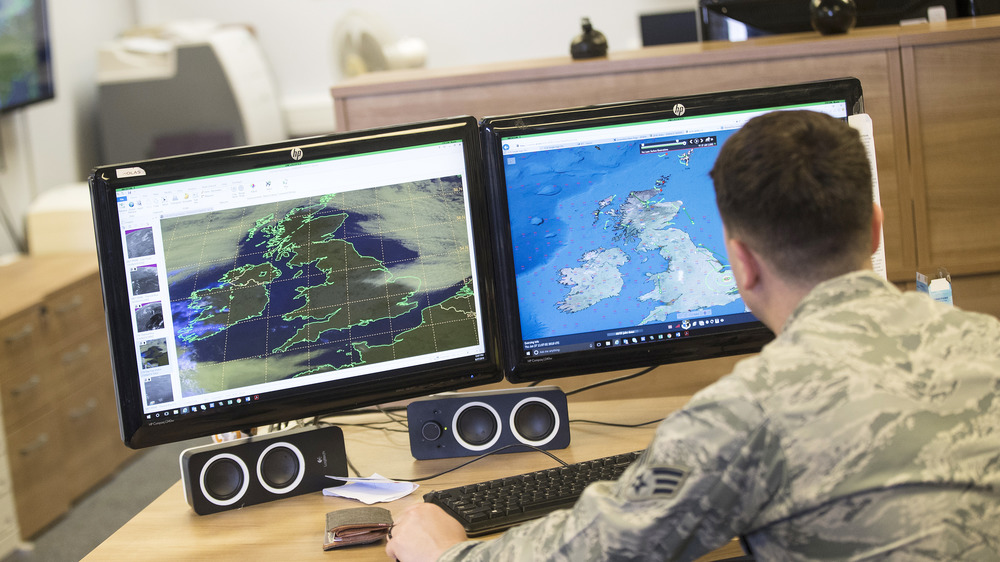
How Many Intelligence Agencies Does The US Have?
At this point, we’ve all seen countless depictions of dudes in suits on TV shows flashing badges and saying acronyms to impress listeners. Fox Mulder: FBI. Dale Cooper: FBI. Nick Fury: S.H.I.E.L.D.
But despite an absolute horde of crime dramas and media portrayals of U.S. intelligence agencies — because let’s be honest: that’s how most folks know anything about the FBI, CIA, and so forth — real knowledge of the daily ins-and-outs of America’s intelligence community is sadly scant. Even the mere number of intelligence agencies is kind of a mystery. We’ve got the FBI, right? Then the CIA, and then…?
As it turns out, there are no less than 18 intelligence agencies in the U.S., as the website of the Office of the Director of National Intelligence (DNI) – an oversight body created in 2005 — tells us. All together, these agencies make up hundreds of thousands (exact numbers are sketchy) of spies, criminal investigators, analysts, IT guys, pencil pushers — you name it. With all that intelligence going around, and an annual budget of over $60 billion (per another DNI website), you’d think nothing would get by anyone, right?
But what do each of these agencies do, exactly? There’s got to be some overlap in departmental duties and responsibilities — some bureaucratic redundancies.
Armed forces intelligence arms
Let’s start with the armed forces. Simply put, each division of the U.S. military has an intelligence-gathering arm. That includes the Air Force, Army, Marine Corps, Navy, Coast Guard, and, yes, Space Force.
The Coast Guard wasn’t included in this list until after 9-11, as an antecedent to the Department of Homeland Security. The Coast Guard occupies a unique place because they’re allowed to act domestically, largely in maritime situations or as first responders, and interact with other agencies to act as stewards of the nation’s borders. Their motto, “Semper Paratus” (“Always Ready”), as the Coast Guard website says, is pretty accurate.
As for the Air Force, Army, Marines, and Navy: Each branch’s intelligence overlaps in some way. The Navy focuses on oceanic territory, naturally, and the Army covers a lot of “signal” intelligence, including imagery and sensory data (hydromagnetic, wavelengths, plasma-based) related to human movement. Likewise, the Marines cover a lot of human intelligence, but also provide geospatial and cryptological coverage (there’s even a cryptology “Hall of Fame” on the Marine website).
The Air Force stands out because they cover aeronautics and provide “airborne, space, and cyberspace sensors,” per the Air Force website. And Space Force? They’re basically an Air Force spin-off with roots extending back into the days of the Cold War, as the Space Force website says — dedicated to “outpacing our adversaries in the space domain.”
Departments embedded in government agencies
Next on the list is departments: intelligence groups who are, as this Washington PostYouTube video explains, “embedded in other government agencies.”
The U.S. Drug Enforcement Administration (DEA), featured on Narcos and Breaking Bad, collects, analyzes, and disseminates drug-related intelligence, broken into three categories, per the DEA intelligence website: “tactical, investigative, and strategic.” Their work can lead to arrests, seizures, and prosecutions, which means they work with law-enforcement officials.
Homeland Security, formed in 2002, focuses on domestic terrorism. Their intelligence arm, the Office of Intelligence & Analysis (I&A), connects directly with state, federal, and tribal lands to pass along intelligence to “operators and decision-makers to identify and mitigate threats to the homeland,” making their powers unique (and a bit scary), per the I&A website. The Bureau of Intelligence and Research (INR), connected to the U.S. State Department (foreign policy) is unique insofar as, per the INR website, they gather intelligence to help with diplomatic negotiations and the work of ambassadors across the globe.
The U.S. Department of Energy’s Office of Intelligence and Counterintelligence gathers intelligence on energy-related dangers worldwide, including nuclear threats. And finally, the U.S. Department of the Treasury’s Office of Intelligence and Analysis (OIA), deals with financial intelligence. As the OIA website says, they’ve been in business since 1798.
Stand-alone intelligence organizations
Finally, we can get to all the cool stuff: disguises, criminal profiling, nifty gadgets — all that jazz that made you want to “be a spy” when you were a kid. (In case you’re still interested, check out the Intelligence Community career page.)
The Central Intelligence Agency (CIA) focuses on subverting foreign threats, as the CIA’s website explains. The Federal Bureau of Investigation (FBI), contrarily, is essentially a domestic law-enforcement body for investigating federal crimes. Since 9-11, they’ve also conducted domestic counterintelligence and engaged in a lot of cybersecurity, says their FBI website.
The Defense Intelligence Agency (DIA), as their website succinctly states, “provides intelligence on foreign militaries to prevent and decisively win wars,” while the National Reconnaissance Office (NRO), per their website, was once a classified, Cold War-birthed organization that focused on satellite recon. Along those lines, there’s the National Geospatial-Intelligence Agency (NGA). As the NGA website declares, “Anyone who sails a U.S. ship, flies a U.S. aircraft, makes national policy decisions, fights wars, locates targets, responds to natural disasters, or even navigates with a cellphone relies on NGA.”
And finally, the National Security Agency (NSA) is essentially a 24-7 online data-gathering machine that focuses almost entirely on cybercrime, as the NSA website explains.

The Truth About The Deadly Brescia Explosion

This Iconic Marilyn Monroe Scene Might've Led To Her Divorce

How American History Classes Lie About Winston Churchill

Mysteries Of The Desert You've Never Heard Of

The Myth About Diamonds You Should Stop Believing

The Surprising Way Serial Killer Earle Nelson Was Caught

Why You Rarely Hear About Carrot Top

The Truth About Japan's 'Minister Of Loneliness'

Will The Leaning Tower Of Pisa Ever Fall Over?

Here's How Trick Daddy Lost All Of His Money


























